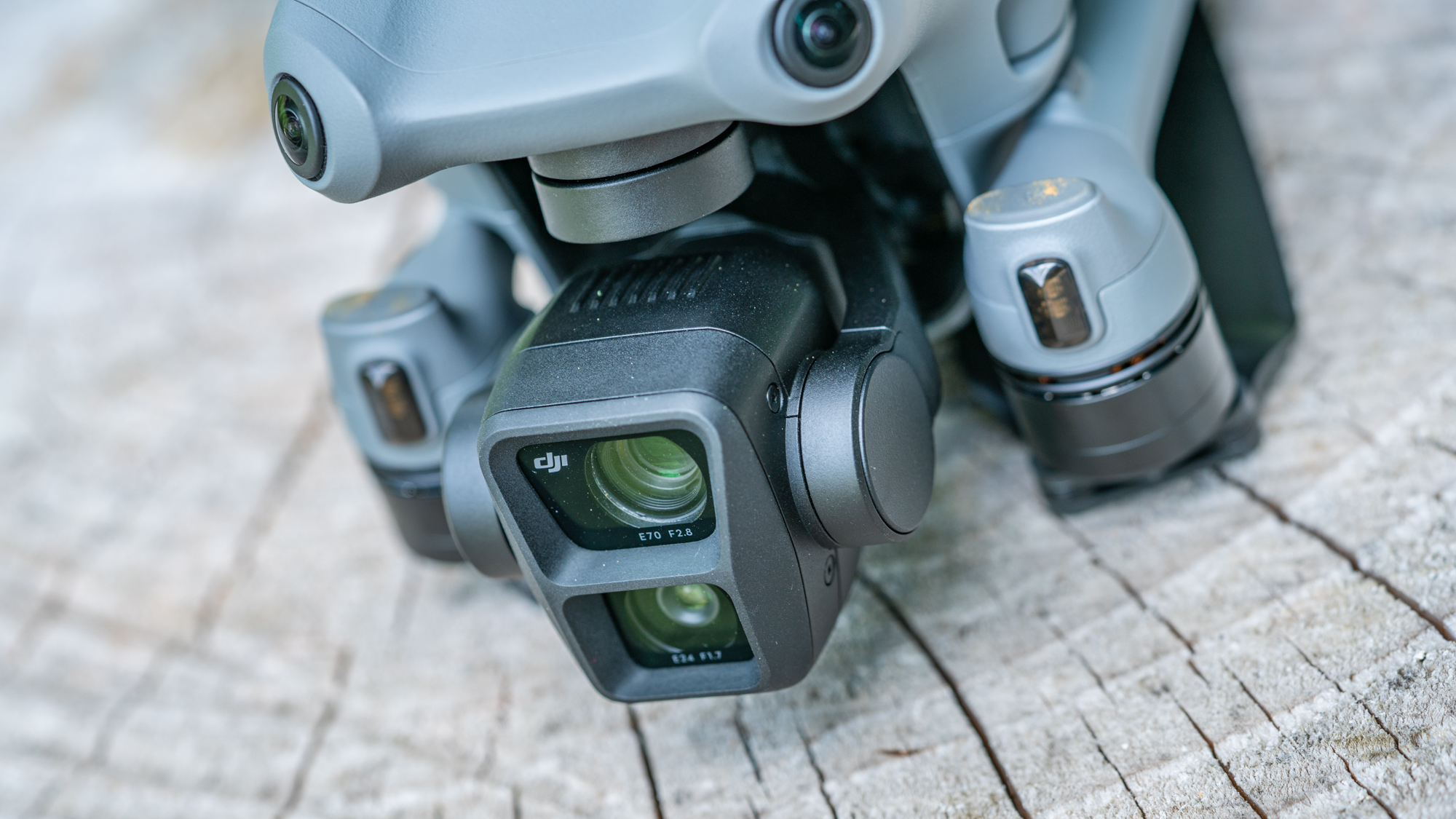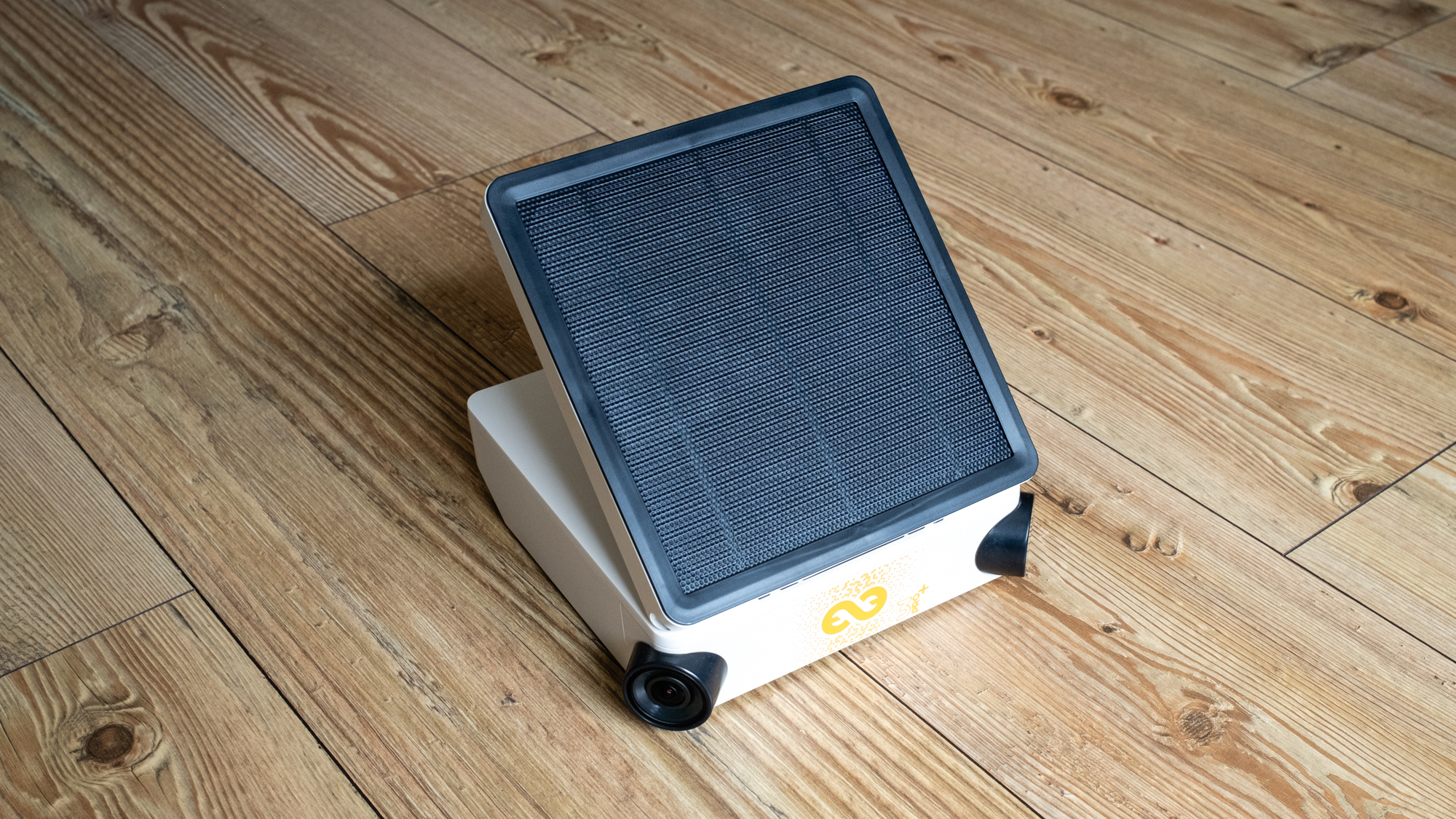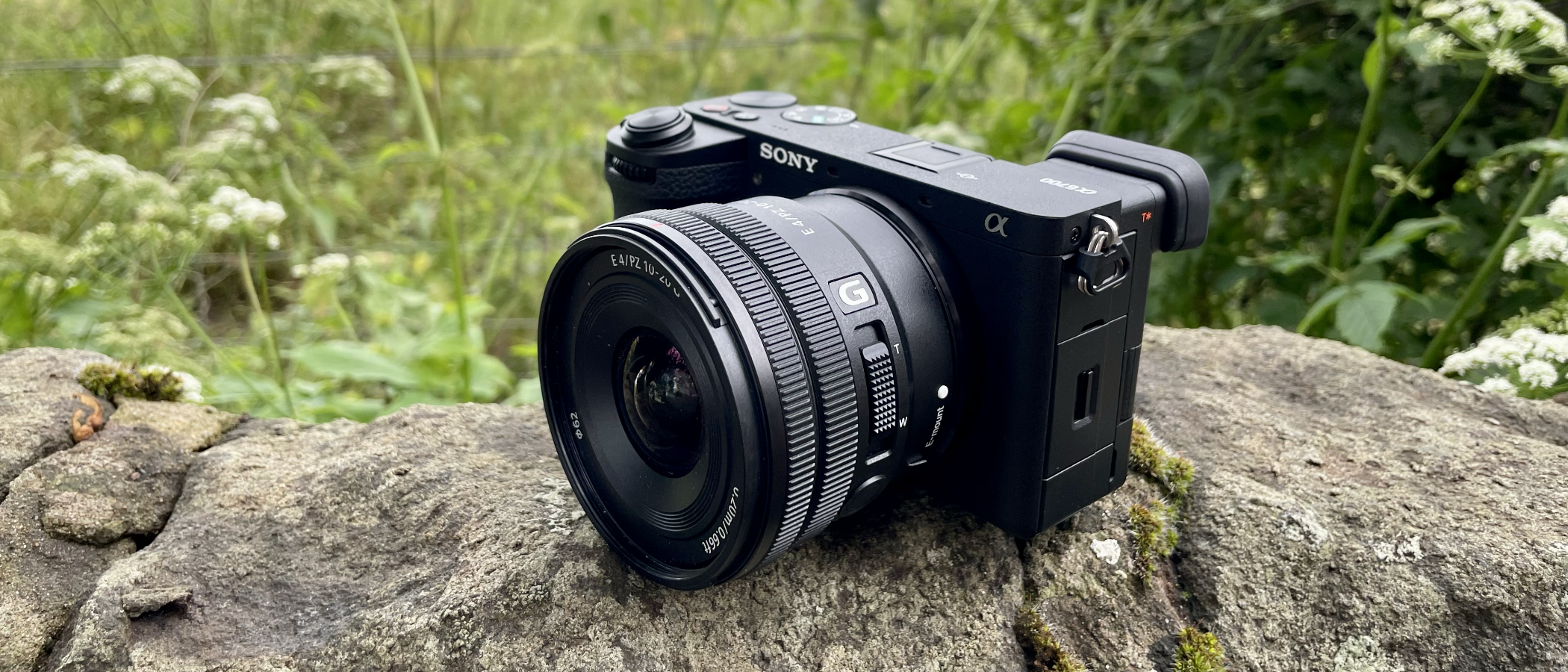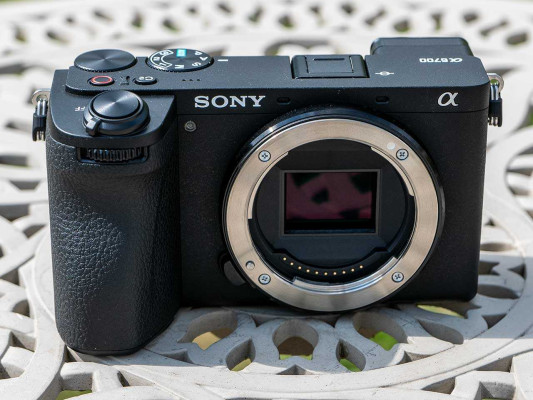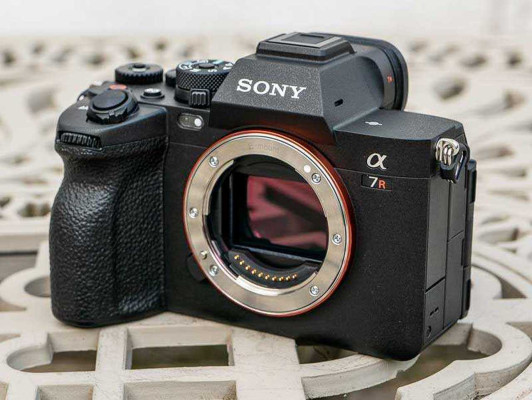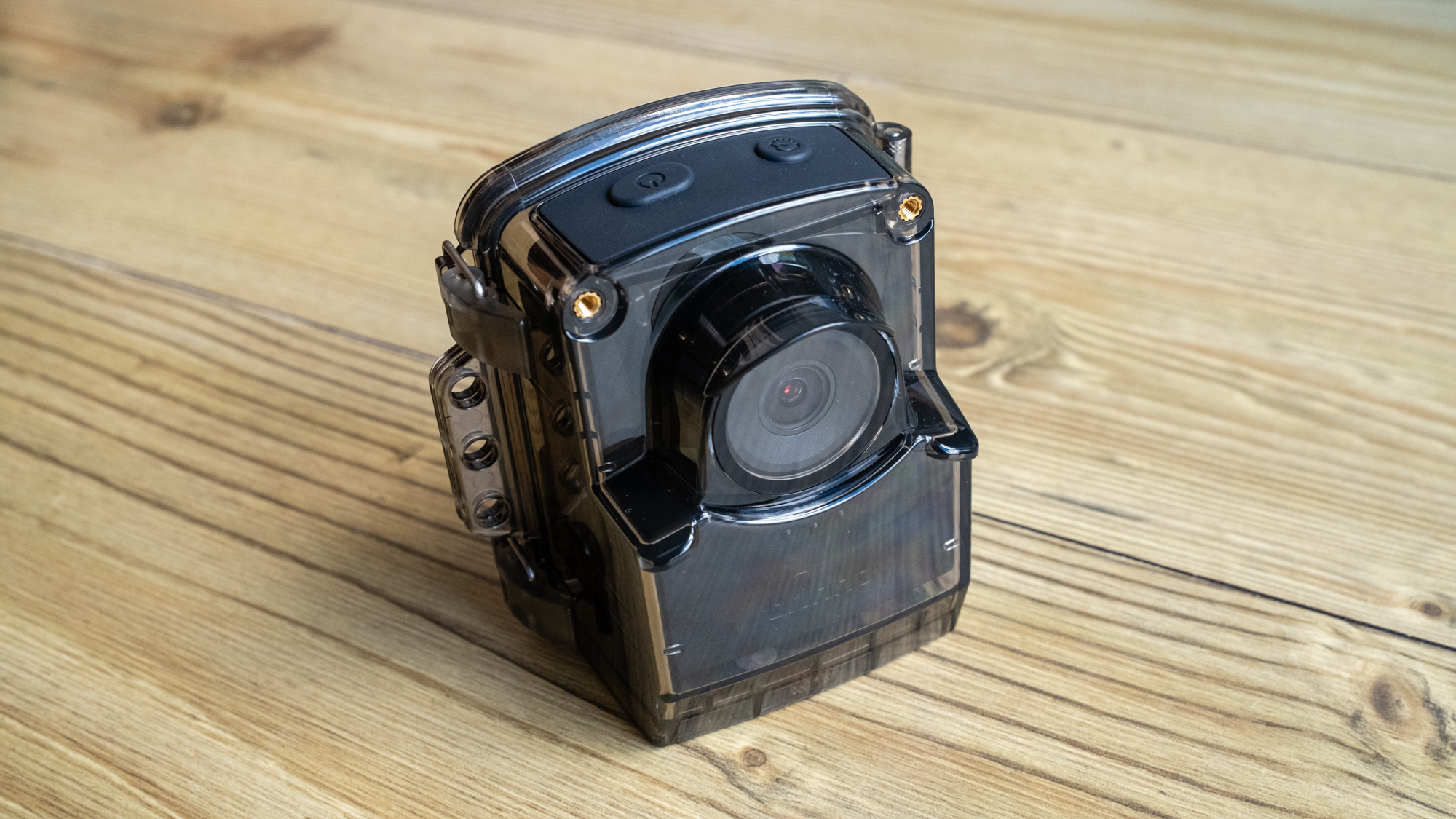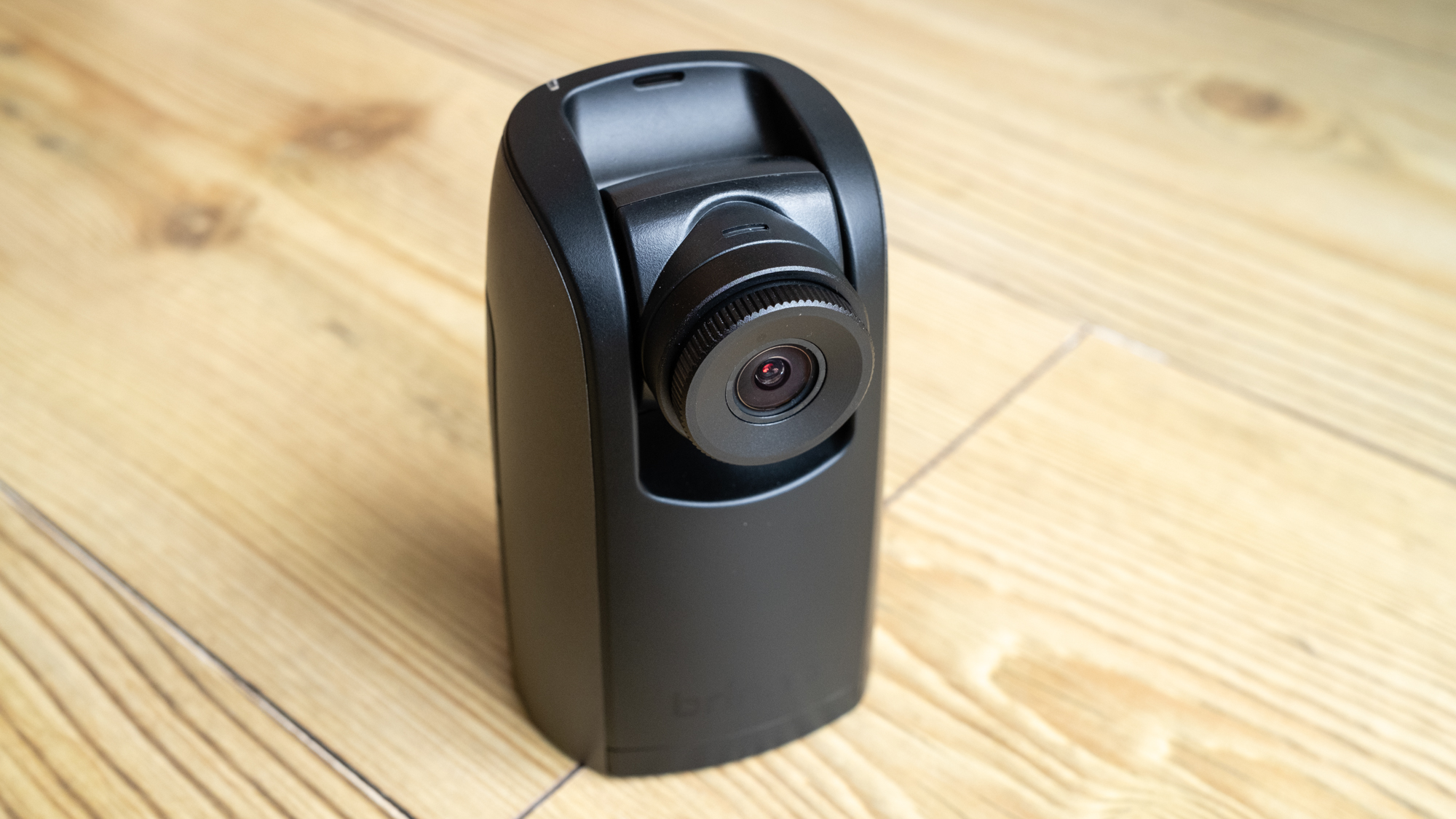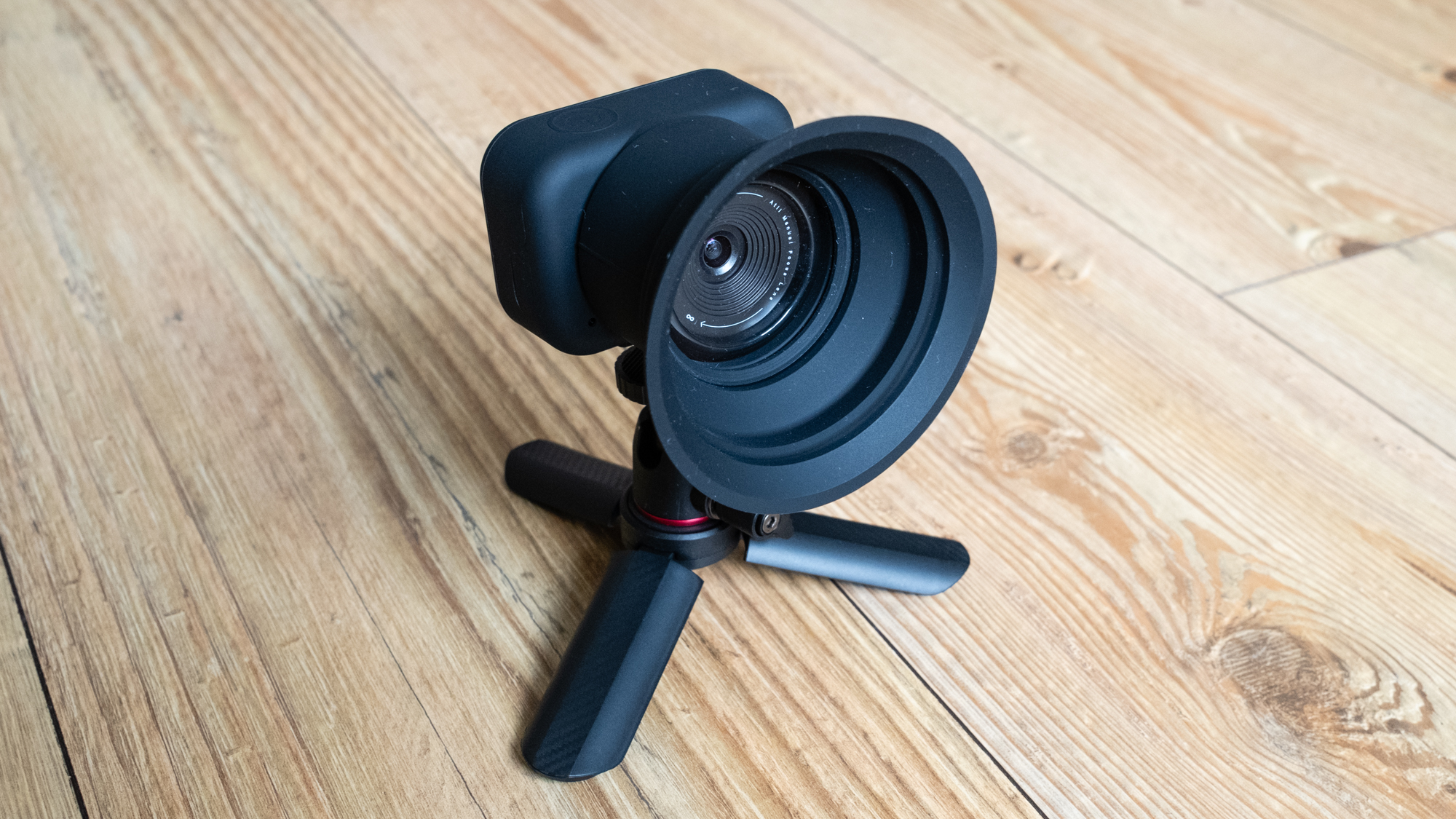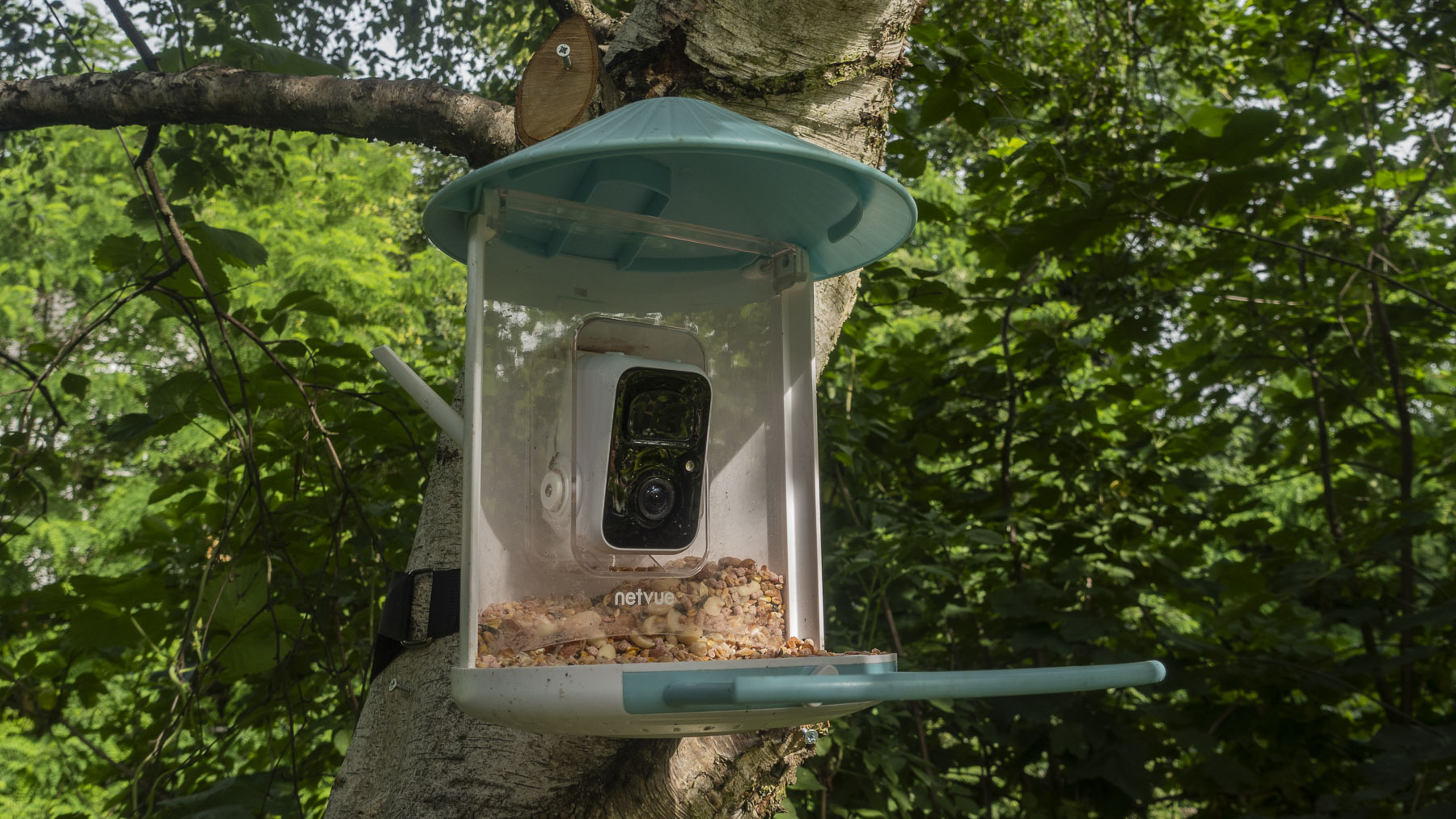Reviews

Capture One Pro 23 review: A much-improved image editor with cool collaboration features
DPReview LatestIt's been a few years since we took a look at Capture One, but today we address that with a look at the popular photography suite's current version.
First created to accompany digital camera backs from the Danish company Phase One, Capture One is nowadays made by a separate company. The eponymously-titled Pro 23 software is available for either Windows or macOS and is compatible with a wide range of camera brands, including most higher-end gear.
 |
When last we looked at Capture One, it was in its 13th iteration, Capture One 20. Today, the 16th major release is dubbed Capture One Pro 23 and is the final version to be numbered thus, as the company has announced that, going forward, the number will be dropped from the product name altogether.
Capture One Pro is one of the main rivals to Adobe's Photoshop Lightroom Classic or CC. It integrates a wide range of features, including a comprehensive set of editing tools and import, browsing, tagging, rating, keywording, tethering and more.
And since our last review, it also includes a raft of collaborative features and a new mobile app. Sadly, the latter is available only for iOS devices, with Android users left out in the cold thus far.
Key features
- Edit, organize, cull, tether and collaborate on your photos, all with just one app
- Good performance and a reasonably approachable user interface
- Comprehensive image adjustments with great image quality
- Face focus helps to make culling easier and quicker
- Multi-shot imaging is now possible for both panoramas and HDR
- Collaborative features help loop your customers into the process
- Higher pricing and less extensive camera support than Adobe Lightroom
Alongside the change in its product naming, Capture One has also made a somewhat controversial change to its purchasing options. You can still purchase a perpetual license for Capture One Pro or, should you prefer, choose to pay for an ongoing subscription as before. But the updates you'll receive post-purchase with a perpetual license are now more limited, and the discounts available on upgrading are less generous than they once were.
Perpetual licenses currently cost $299, while a perpetual license to Capture One Pro costs $24/month if subscribed month-to-month or $14.92/month with an annual subscription. This subscription also earns you access to a free, feature-limited version of the Capture One Live collaboration tool. A bundle adding full access to Capture One Live and the Capture One Mobile app for iOS costs $34/month for month-to-month or $16.19/month with an annual subscription.
No new features for perpetually-licensed customers
But where in the past perpetual licenses would also receive any new features added to the subscription version of the software before the debut of each major release, new perpetual licenses bought today will now only receive bug fixes post-purchase. New features will be saved to be released en masse alongside each year's new version of the perpetually-licensed software.
With this strategy, Capture One is clearly hoping to push customers toward a subscription. And at the same time, Capture One has also replaced its upgrade program with a new loyalty program which now also features a similar nudge towards subscription.
If you stick to perpetual licensing, you'll need to upgrade every year to get the most generous upgrade discount of 40%, while customers who upgrade every other year will receive a more modest 20% discount. If you upgrade less often than that, you'll pay the full sticker price for every release, receiving only 20% off a new subscription instead.
Long-term subscriptions now earn a free, perpetual license
Subscription customers, though, can get much higher discounts on switching back to a perpetual license, at least if they've stuck with Capture One for long enough. For each year as a subscriber, you now receive a stackable 20% discount on a perpetual license. This means that after the fifth full year, you'll be eligible to receive a perpetual license completely free of charge.
It's effectively insurance against a need to tighten your belt in the future, and, again, it's intended to push you towards a subscription in the first place. But it's nevertheless still a nice perk for which rival Adobe has no answer, as Lightroom is no longer available under perpetual licensing. Stop paying for Adobe Creative Cloud after five years, and you'll lose all access to your software and the edits you've made with it.
 |
| Capture One's interface is packed with features. Here we have a rule of thirds grid, exposure warning and split before/after view active simultaneously. |
What's new in Capture One 23
So what's new in Capture One Pro 23? Compared to the previous major release, the most significant change in this version is the arrival of a new Smart Adjustments tool that tweaks exposure and white balance across a batch of portrait images to yield a consistent look across different lighting conditions.
Meanwhile, the cull and importer dialogs gain a new Face Focus tool that allows you to review the sharpness and facial expressions of your subjects quickly. And there's also a new beta version of an AI-powered dust removal tool, plus support for wireless tethering of Fujifilm cameras.
The web-based Capture One Live tool, which debuted in last year's Capture One 22, has gained automatic reconnection, email notifications, new reviewer roles, new sorting options and better filtering. Additionally, Apple users get integration with the Frame.io collaboration tool and support for the company's ProRaw file format.
There is also a miscellany of smaller UI changes, performance enhancements and bug tweaks, as well as support for 14 new cameras and 15 new lenses.
And with that nutshell view out of the way, let's roll up our sleeves and test some of these new features!
Collaboration is a snap with Capture One Live
 |
| Thumbnails in Capture One Live can be user-sorted, but only chronologically in either order. |
Among the new features, Capture One Live struck me as particularly impressive. It's straightforward to use and allows images to be watermarked for protection. Your ratings and color tags are also synchronized with the web app.
Images appear and disappear from Live as you add or remove them in Capture One, and your edits also show up in a matter of a second or two, even on a relatively low-speed internet connection.
You can limit your customers' logins to viewing only or allow rating and/or tagging on a per-user basis. (Anyone allowed to rate or tag can also leave comments.) You can also enable anonymous access to anyone with the link, with the same limits available to anonymous users as for signed-in ones.
 |
| Commenting, rating and tagging in Capture One Live can be left open to all or limited to certain logged-in users. |
The web interface allows your customers to reverse the chronological sort order, search for an image by filename and filter by rating(s) or color tags as well as by the presence of comments.
An overall listing of comments is available, and there's also an option for the customer's view to switch between images automatically as you make edits or upload new shots, keeping them on the same page with your work.
A few Live shortcomings I'd like to see addressed
There are only a few downsides that I noted in all of this. The comments can't be synced back to Capture One Pro itself, so if you want to read them in real time, you'll need the program open and Capture One Live in your web browser.
 |
| A comment list helps you quickly locate the images that need attention, but its comments don't sync back to Capture One. |
Also, ratings and color tags from customers will overwrite your own, and those from each other, and keywords aren't synced up with the Live site, so the search dialog is limited solely to filenames.
Finally, a fair bit of functionality is only available to Capture One Pro customers, with the lower-priced subscription and perpetually-licensed versions restricted to the lesser-featured Capture One Live Free.
And officially, I'm told that only the last two point releases of the software are supported by Capture One Live, although the feature may continue to work with older versions for some time, regardless.
That is to say that as of right now, you should be running v16.1 or 16.2, but not v16.0. You'll thus need to ensure you're regularly updating to a recent version if Capture One Live is an important feature for you. (And perpetually-licensed customers shouldn't expect the Free version to continue working indefinitely without annual upgrades.)
You'll need to pony up to get all this goodness
The Live Unlimited subscription allows for multiple simultaneous live sessions with a one-month maximum duration per session versus just a single session with a 24-hour limit for Live Free. The ability to control user rights, see who made each comment, add watermarks and send emailed invites are also restricted solely to Live Unlimited.
 |
| You can filter images by the presence of comments, tags or ratings. There's also a search function, but it doesn't work on image tags, only on their filenames. |
Perpetual customers can, however, subscribe to Capture One Live Unlimited for $5/month while not paying a subscription cost for Capture One Pro. And those paying for Capture One Pro on a month-to-month basis can also halve the added cost of the higher subscription if they don't need Capture One Mobile.
Despite the added cost and a few shortcomings, this is a rather impressive feature. I'm sure it would be extremely useful for individual photographers or studios who need to collaborate with their clients in real-time, and even the free version could prove somewhat helpful.
I should also note that if you're on the macOS platform and prefer to use Frame.io for collaboration, that is also now possible. I'm a Windows user, so it's not something I could test, but if you're on macOS, you can get a sense of how it all works here.
 |
|||
| Spherical | Cylindrical | Perspective | Panini |
| Capture One Pro 23's panorama-stitching UI showing the four different projection types available. | |||
Multi-shot imaging comes to Capture One Pro
Another feature I'm thrilled to see added to Capture One Pro is support for multi-shot imaging, both for stitching panoramas and merging high dynamic range imagery. Again, these features both debuted in last year's Capture One 22 release.
Sadly, focus stacking isn't yet possible in-app, with Capture One instead recommending a workflow that hands off your creations to Helicon Focus for that step. That's probably a bit more of a niche request than panoramas or HDR, though, so its absence is understandable.
A capable new tool for creating raw panoramas
Panoramic stitching in Capture One Pro works only with Raw files, so if you're a JPEG shooter, it's going to necessitate a change to your workflow. The good news is that it's a very quick and easy process: You only need to select the photos to stitch in the browser, right-click and choose 'stitch to panorama'.
After a short delay, you're shown a panorama preview using one of four different projections: Spherical, Cylindrical, Perspective or Panini. Whichever projection type you used most recently is previewed first.
When you change between projections, the preview only needs to be rendered once and is then cached, making it much quicker to switch back and forth while you decide which type to use. Capture One also tells you the pixel dimensions and megapixel size for each projection type and allows you to reduce the scale to 75, 50 or 25% if you want to reduce that size a bit.
The only thing that's really missing here is any way to adjust cropping during the stitching process, which means you'll need to use the cropping tool once stitching is complete. But although the cropping tool lacks any way to limit your crop to areas with image data, it's quick enough to maximize your panorama's area using the navigator tool and 100% zoom level.
And the great news is that since you're starting from Raw, your newly-stitched panorama is also saved as a DNG file, retaining the flexibility to recover highlight or shadow data as you continue the editing process.
I also found the stitching quality to be very good, not just with panoramas shot on a tripod, with attention paid to providing sufficient overlaps. Capture One also did surprisingly well at stitching together handheld images that I'd never really intended to form a panorama in the first place!
Quick and painless HDR, too
Capture One Pro 23's HDR tool only accepts Raws and outputs its results in DNG Raw format, just as for panoramas. Given that the point here is to achieve the maximum dynamic range, though, the choice to forego JPEG support is much easier to understand than for panoramas.
Again, the process couldn't be much easier – select your images, choose 'Merge to HDR' from the right-click menu, and then choose whether Capture One should auto-align or auto-adjust the resulting HDR image.
 |
|
| Single-image exposure | Three-image auto-adjusted HDR, 3.0EV steps |
Auto alignment will attempt to correct for motion from shooting handheld. Auto adjustment will tweak the white balance, exposure, HDR and levels values as appropriate for the image, potentially saving you a little work in manually adjusting them.
The auto alignment algorithm performs its task well, and while some noticeable artifacts can be left behind if there's subject motion in the image, overall image quality is very good.
Dehazing is great to have, but not as powerful as rivals
The Adjust panel's Dehaze tool is another new addition since our last review. It comprises two parts, a Dehaze slider and a shadow tone dropdown. Although Dehazing itself can't be controlled automatically, the shadow tone is by default. It can be overridden manually, though, by using an eyedropper tool to pick a spot that should be dark, other than for the haze.
I found that I tended to get somewhat better results when selecting the shadow tones manually in very hazy images. I also felt that while still useful, the strength of the Dehazing effect lagged behind both Adobe Lightroom and DxO PhotoLab.
Adobe tended to be able to pull back the most contrast and saturation from the haze but was prone to overly bold foreground subjects and overly-shadowed hazy ones when doing so. DxO was much better when it came to not making foreground objects look overly contrasty and saturated, but its recovered areas tended to look rather more muted, especially in terms of saturation.
Capture One, meanwhile, tended to provide the least scope for recovering the hazy areas without making contrast too high in the foreground. That said, I still found Capture One's Dehaze tool to be fairly effective overall, especially in shots with only mild to moderate haze. It was only with the really extreme examples that it struggled a bit.
Portrait-friendly Smart Adjustments could save a lot of time
And finally, we come to the most significant new feature in this year's release of Capture One Pro, Smart Adjustments.
I should note right off the bat that this ML-powered feature only really works for portraits right now, as it relies both on your reference image and those you're planning to adjust in batches, all having faces in them.
The way Smart Adjustments work is that you first edit the white balance and exposure for your reference image by hand, and then Capture One will do its best to give the same look to your other images.
Of course, this would be trivially easy were they all shot in the same lighting conditions as might be the case for, say, school portraits. But think instead of something like event photography, where you're moving around a venue with varying lighting.
Here, you can't just apply the exact same settings across the board to get the same look. That's where Smart Adjustments come in, with the underlying AI algorithms figuring out the individual adjustments needed for each photo to get to your desired look.
Of course, white balance and exposure are just one part of the puzzle. You're likely to want to adjust more than just those, and you can, of course, do so, but the Smart Adjustments tool doesn't apply the other adjustments. Instead, they rely on Capture One's existing styles system, which can now be set to save and apply the smart adjustments alongside the other tweaks it could already make.
In my testing, I found Smart Adjustments to work well, even with varied subjects, poses and lighting. Used in concert with custom styles as intended, it has the potential to save you a good bit of time and work.
Auto rotation and keystone work well and easily
Recent versions of Capture One have also featured both automatic rotation and keystone corrections that debuted since our last review. Both are applied by the Auto Adjust tool and enabling them takes just a couple of clicks, so they couldn't be any easier to use. I found them both to work well with the majority of images.
 |
|
| Original | Auto keystone |
The only real outliers were images with no clear horizon or obvious verticals to key from and those which would have required such extreme keystone correction that they weren't conducive to the technique.
It's a pity that you can't dial back the strength of the keystone correction, though, as frequently I find myself not wanting perfectly parallel verticals but rather to somewhat reduce the strength of the keystone. (If the verticals are too near to parallel, things can look unnatural.)
Dust Removal is in beta but already working nicely
One last image editing feature of note in Capture One Pro 23 is an AI-powered dust removal tool that takes over from the earlier non-AI equivalent. And while it's currently in beta testing, I've found that it already seems to be doing a pretty solid job.
Admittedly, I don't have a mass of dusty shots to hand with which to test, as I tend to be pretty careful about keeping my gear clean. With years of camera reviewing under my belt, I've invariably been shooting with new or almost-new cameras most of the time.
But I ran several images from the notoriously dust/oil prone Nikon D600 through it. As you can see, it identified and corrected all of the visible dust/oil specks while not falsely identifying image detail as being dust.
In fact, not only did it get everything that was visible, but it also found some dust which – even after overlaying the positions of its corrections on the original image – I can still barely see myself. And this is another tool that works with a single click in very little time. So it seems to be a great addition, even if Capture One cautions that while under beta, it may still leave a visible trace in its wake in some images.
Magic Brush/Eraser makes light work of complex selections
There are also a couple of new selection tools since our last review. The Magic Brush and Magic Eraser are two related tools that help you quickly make subject masks based on their color.
With the Magic Brush, you paint your selection into the image, adding each consecutive brush stroke to your existing mask. The Magic Eraser does much the same, but removing from your mask selection instead.
Both tools allow for the brush size and opacity to be controlled and for its tolerance and edge refinement to be adjusted. (And if you prefer, these controls can be linked so that if you change, say, the size of the Magic Brush, the Magic Eraser's size will be changed at the same time.)
The Magic tools can also optionally sample the whole image at once rather than just a contiguous area around your brush stroke. This can make it particularly easy to do things like select all areas of the sky which are visible through a complex foreground object with just a single action.
Face Focus puts subjects frontmost during import and culling
There are also a couple of handy new UI features to be found in the latest version of Capture One Pro. The most significant is what Capture One calls Face Focus, a new view mode available in both the import and culling screens.
The Face Focus tool scans through your photos to identify the faces and then shows previews of each face alongside the image. Using this feature, you very quickly get a sense of the sharpness or expression before deciding whether to import or cull the shot, with no need to zoom in on each face manually.
 |
| Capture One Pro can both group shots by similarity and show closeups of the individual faces/eyes in your photos, making it easier to separate the wheat from the chaff. |
You're given a choice of five different zoom levels for Face Focus crops. Your subjects can be shown at either 50, 100 or 200% levels, or you can choose options to show the whole face or just the eye. The last two options will zoom out as necessary to accommodate faces that fill much of the image frame, but they won't zoom in beyond 100% for very small faces.
Speed Edit saves time and avoids carpal tunnel
The other new UI feature I rather appreciated is called Speed Edit. This saves you from having to mess around with fiddly sliders by cleverly using your mouse and keyboard together. (And I'll interject here quickly to note that even without Speed Edit, I already found Capture One particularly generous with its selection and customizability of keyboard shortcuts.)
Instead of fumbling for and fiddling with the slider for, say, saturation, Speed Edit has you press the relevant key on your keyboard and then roll the scroll wheel on your mouse or use the equivalent gesture on your touchpad. As you do so, a temporary view of the slider appears at the bottom of the screen, allowing you to confirm the current value and range available while changing it.
 |
| If you don't like the default Speed Edit key assignments, you can change them to your liking. |
In all, there are 19 sliders that can be interacted with in this way, with 14 of them assigned a keyboard key by default. Sure, that's a lot of keys to remember, but you can also change them to suit your own tastes, and once learned, they make for a much quicker editing experience. They're also kinder on the wrist, as you can skip a lot of fine and repetitive mouse motions.
Great performance but more limited camera support than Adobe
During my time with Capture One, I've come away impressed by its performance. In my last review, I found Capture One 20's performance to be only fair and image rendering slow compared to Adobe. With the numerous performance improvements made in the intervening years, Capture One Pro 23 does much better.
Image rendering times are now in the same ballpark as for Lightroom, and overall UI performance and responsiveness are noticeably better than Adobe's app. And I didn't go easy on Capture One in my testing, either, cramming it with roughly 15,000 raw images that totaled nearly 900GB in size.
 |
|||
| Capture One | Adobe Camera Raw | Capture One | Adobe Camera Raw |
| Support for less commonly used, lower-end or newer hardware is a weak spot for Capture One versus Adobe. Here, we're looking at two photos from my recently-launched Google Pixel 7A, which went on sale in mid-May 2023. Both apps have been commanded to auto-adjust their images. Adobe delivers rather muted but usable results, while Capture One's are totally unusable. | |||
But while performance is clearly a strength these days, one area in which it still trails its well-entrenched rival is in terms of camera and lens support. For pros, it's not such a big concern. Chances are good that your higher-end standalone camera gear will be supported.
For photographers using lower-end or less-common gear or who want to be able to process photos from their smartphones and the like, though, the list of supported cameras and lenses is somewhat less generous. This has long been an area in which Adobe excels, and it's one in which Capture One has yet to catch up, sadly.
Conclusion
A lot has changed with Capture One since last we reviewed it. And for the most part, those changes are very positive.
But the elephant still lurks in the corner of the room when it comes to the company's perpetual licensing changes. The changes to Capture One's update and upgrade programs created quite an uproar when they were first announced, and they still feel a bit stingy even now with Capture One Pro 23.
The silver lining is that at least Capture One hasn't followed Adobe down the path into subscription-only territory.
Capture One Pro performs as well as ever on the image quality front, but it's now faster, more capable and packed with even more useful tools
And other than that controversial topic, a lot has changed for the better in bringing us to Capture One Pro 23. The program performs as well as ever on the image quality front, but it's now faster, more capable, and packed with even more useful tools.
The debut of multi-shot imaging techniques, in particular, is great news for Capture One users. We're also quite impressed by the built-in collaboration tool Capture One Live. The ability to solicit feedback from your offsite customers and integrate these into your shooting and editing workflow immediately could prove a huge boon for a photography business. Last but not least, the new Smart Adjustment feature feels like a big potential time saver, too, as does the beta version of the Dust Removal tool.
Overall, Capture One Pro 23 gives photographers plenty of reasons to consider a switch from Adobe Lightroom Classic and feels like a much more capable program than it was just a few years ago. With a free 30-day trial available from the company's website, it feels like a no-brainer to at least test drive.
| What we like | What we don't |
|---|---|
|
|

















